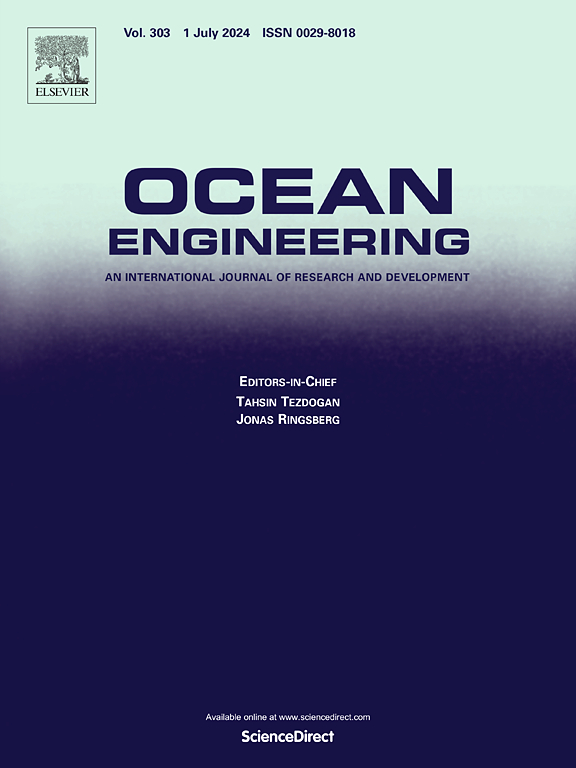Clamping parameters in full-scale tidal turbine blade tests: A case study
IF 4.6
2区 工程技术
Q1 ENGINEERING, CIVIL
引用次数: 0
Abstract
Full-scale laboratory tests of composite tidal turbine blades follow standards adapted from the testing of much longer wind turbine blades. Due to the much higher density of seawater, when compared to air, the diameter of an equivalent-power marine tidal stream turbine is approximately 4 times less than that of a wind turbine. In this paper, relevant guidelines regarding load introduction points for testing of tidal blades are assessed for the first time, specifically, the dimensions of the exclusion zones surrounding these loading points, that are ordinarily excluded from structural analysis. The dimensions of these zones are determined as a function of the blade chord length at the loading saddle locations, and the relevant standards suggest an exclusion length of up to one chord length at both sides of the load introduction points along the blade length. This study appraises these boundaries via a full-scale composite tidal blade structural test at the FastBlade facility, using a saddle-hydraulic actuator system. Strain measurements and Digital Image Correlation (DIC) are used to quantify the local strain contributions from saddle to blade clamping, during both static and fatigue loading. We propose a reduction of the exclusion zone boundary length from 1 to 0.45 times the chord length, based on the experimental comparison of two clamping methods: a manual torque-wrench method and a hydraulic-pressure method. The saddle material was also assessed by comparing the structural performance of MDF and plywood during these blade tests, with plywood showing better characteristics for high blade design loads. Our analyses could be used to update current standards to better align with the unique characteristics of composite tidal turbine blades, to effectively minimise the number of structural tests required for blade certification.
求助全文
约1分钟内获得全文
求助全文
来源期刊

Ocean Engineering
工程技术-工程:大洋
CiteScore
7.30
自引率
34.00%
发文量
2379
审稿时长
8.1 months
期刊介绍:
Ocean Engineering provides a medium for the publication of original research and development work in the field of ocean engineering. Ocean Engineering seeks papers in the following topics.
 求助内容:
求助内容: 应助结果提醒方式:
应助结果提醒方式:


